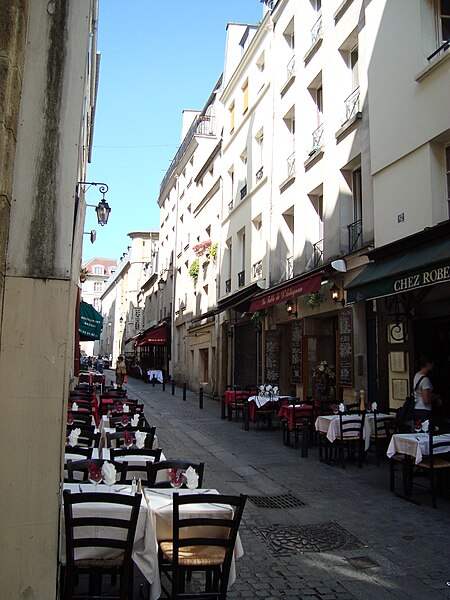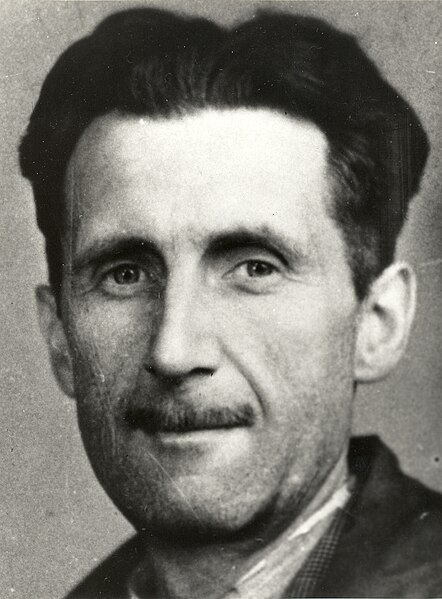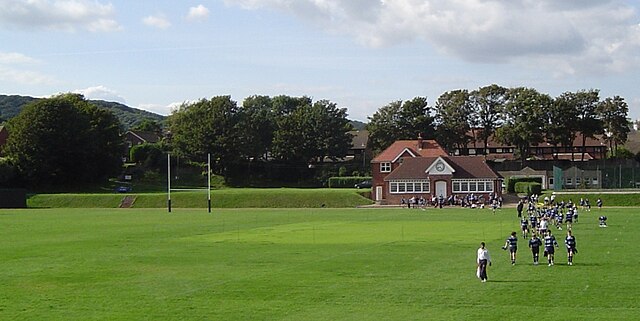Down and Out in Paris and London
Down and Out in Paris and London is the first full-length work by the English author George Orwell, published in 1933. It is a memoir in two parts on the theme of poverty in the two cities. Its target audience was the middle- and upper-class members of society—those who were more likely to be well educated—and it exposes the poverty existing in two prosperous cities: Paris and London. The first part is an account of living in near-extreme poverty and destitution in Paris and the experience of casual labour in restaurant kitchens. The second part is a travelogue of life on the road in and around London from the tramp's perspective, with descriptions of the types of hostel accommodation available and some of the characters to be found living on the margins.
Cover of first edition
Orwell's Paris street, in the 5th arrondissement: "tall old-fashioned windows and dark grey leaded roofs; not far from the École Normale Supérieure—earlier in the twenties, Hemingway had lived only 500 yards (460 m) from Orwell's street; Elliot Paul was then still living in his own 'narrow street', the Rue de la Huchette, in the same arrondissement down by the river near the Place Saint-Michel; and once, at the Deux Magots in 1928, Orwell thought he saw
Orwell described the four penny coffin as an inexpensive and comparatively safe sleeping option for the poor of London.
Eric Arthur Blair was an English novelist, poet, essayist, journalist, and critic who wrote under the pen name of George Orwell. His work is characterised by lucid prose, social criticism, opposition to totalitarianism, and support of democratic socialism.
Press card portrait, 1943
Orwell's birthplace in Motihari, Bihar, India
Blair family home at Shiplake, Oxfordshire
Blair's time at St. Cyprian's inspired his essay "Such, Such Were the Joys".







